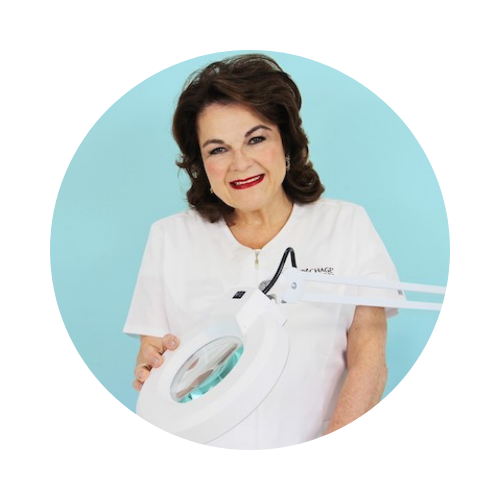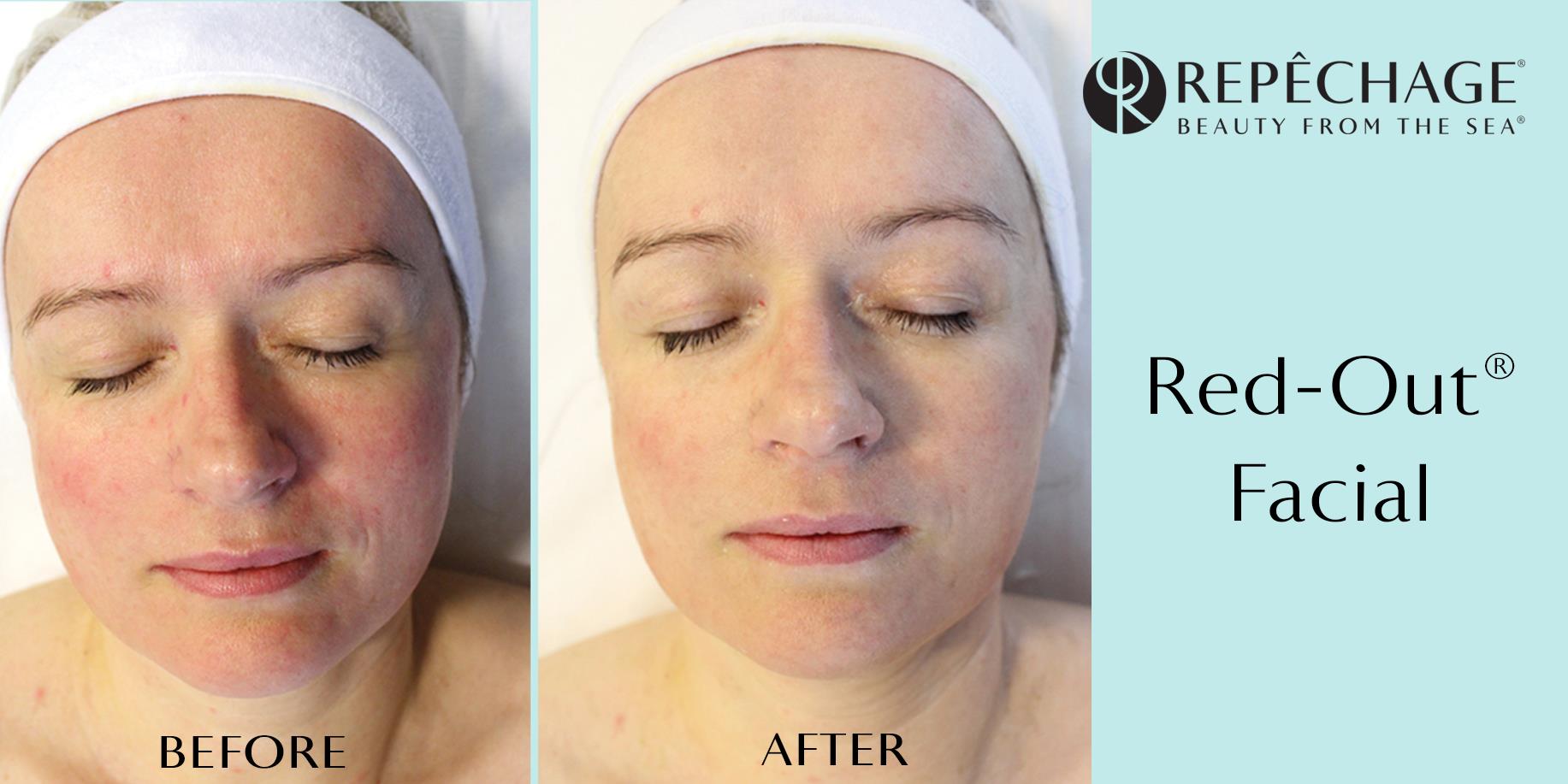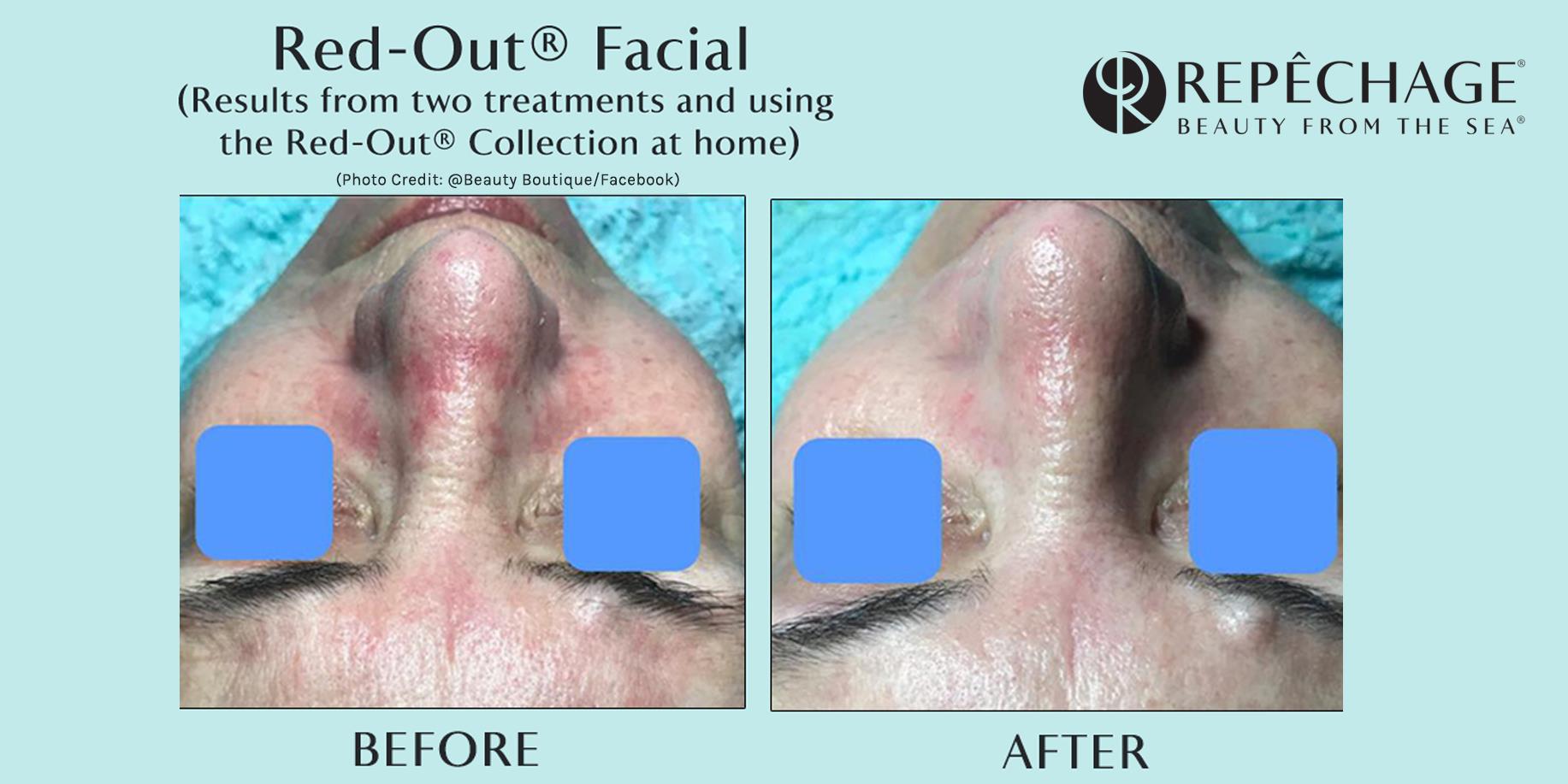The problem of sensitive skin has risen dramatically in the last decade, highlighting the need for affordable, effective, and scientifically-formulated and tested products designed especially for people with sensitive skin.²

Contribution by Lydia Sarfati – Repêchage® CEO and Founder
Lydia has contributed many articles to Lipgloss + Aftershave. Lydia Sarfati is an international industry leader, with over 46 years of experience as a spa owner, consultant, and esthetician. She is the Founder/CEO of Repêchage®, the first company to bring seaweed-based skincare treatments to the U.S market and is the President of CIDESCO Section U.S.A, the world’s major international beauty therapy association. She appears at industry trade shows, is the author of Success at Your Fingertips: How to Succeed in the Skin Care Business and The Repêchage® Book of Skincare Science & Protocols, and is a contributing author to textbooks such as The Milady Standard Esthetics: Fundamentals, Twelfth Edition, and Oncology Esthetics®.
We do know that two factors that impact the functions of the matrisome and ECM are adequate tissue hydration and exposure to free radicals. Proper hydration is impacted by environmental factors, genetics and aging. They have also found that the main mechanism involved in preventing ECM changes is to keep free radical or Reactive Oxygen Species (ROS) production under control. Their formation can be exacerbated by ultraviolet (UV) light, tobacco, and chemicals. The human body protects itself from ROS by utilizing antioxidant enzymes (SOD), such as catalases and glutathione peroxidases, which neutralize radicals and produce less harmful substances. However, as one’s body declines with age, levels of these antioxidant enzymes also decrease. ³
2 Skin Care Pro’s Offer
5 Spring Skin Care Tips
Download Your Spa-Goer’s Guide To Spring Skin Care
9 Beneficial Ingredients For Sensitive Skin
There are many ingredients that are being found to help nourish and hydrate the skin, provide antioxidant protection and support the skin barrier.
Seaweed
Seaweed is the most beneficial ingredient for sensitive and sensitized skin. Seaweed extract is chemically similar to seawater, which is biologically similar in chemical composition to our intercellular fluid. Laminaria Digitata Seaweed extract, for example, contains 12 vitamins, 42 minerals and trace elements, and 18 amino acids to help skin remain hydrated, restored, renewed, and radiant. It is one of the richest sources of natural antioxidants such as phlorotannins, sulfated polysaccharides, fucosterol, and fucoxanthins5. Seaweed also contains essential fatty acids that help maintain our skin’s barrier, and polysaccharides such as Alginic Acid, which help to lock moisture into our skin.
Niacinamide (Vitamin B3)
This vitamin has a multitude of benefits. Studies have found that it has many benefits, including antioxidant properties, improvement of skin elasticity, and reduction in the appearance of redness, pores, and hyperpigmentation.6,7 Also, niacinamide is greatly tolerated by many skin types.
Sodium Hyaluronate and Hydrolyzed Sodium Hyaluronate (Hyaluronic Acid)
Hyaluronic Acid is a natural moisturizing polysaccharide prevalently found in the skin that is known to hold 1000X its weight in water. In the body, Hyaluronic Acid is known to help keep skin moisturized, repair skin tissue, transport nutrients in the blood to skin cells, serve as a cushion to lubricate and protect against damage, and contribute to the resilience and suppleness of the skin. As the body ages, Hyaluronic Acid decreases, leading to loss of moisture and elasticity, and contributing to the formation of lines and wrinkles.8 In skin care, benefits include intense hydration of the skin, helping skin to appear more plumped, and diminishing the appearance of wrinkles. A major component of the ECM is hyaluronic acid (HA) which is produced mainly by fibroblasts and keratinocytes in the skin and may play an important role in epidermal barrier function and SC hydration. It is polysaccharides that are regarded as moisture-controlling substances, which is why they are included in hydrating formulas.9
Micro Silver
Micro Silver is a revolutionary new ingredient made from pure, micronized silver. This releases pure, soluble silver ions at the surface, forming an invisible layer on the skin. It supports the reduction of the appearance of redness in irritated skin and has a long-lasting effect.
Chios Mastiha (Mastic) Oil:
From the island of Chios Greece, this extract is characterized by a balsam-like odor and has been used in Greece for centuries. Chios mastic oil (CMO), the essential oil derived from Pistacia lentiscus has generated considerable interest because of its beneficial properties.10 In both essence and oil form, this ingredient is known to help strengthen the appearance of the skin barrier, to instantly help reduce dryness, while plumping the skin to provide lasting comfort.
Quercetin:
A polyphenol derived from plants responsible for their pigment color that is reported to be more effective as an antioxidant than Vitamins E and C. This ingredient is known to have excellent soothing properties and has been shown to reduce oxidative stress.
Oxidized Glutathione:
A tripeptide is composed of glutamic acid, cysteine, and glycine. Known to be a potent antioxidant, and to be effective in lightening the appearance of skin, increasing hydration, and reducing the appearance of wrinkles.
Rutin:
A natural citrus bioflavonoid antioxidant extracted from the dry buds of sophora japonical, the Japanese pagoda tree.
Mirabilis Jalapa:
Also known as the “Marvel of Peru,” this extract is useful to help lessen the appearance of dry skin.
3 Treatments and Products to Combat the Appearance of Redness
This facial treatment utilizes antioxidant ingredients including Laminaria Digitata Seaweed extract, Micronized Silver, Quercetin, Rutin, and Mirabalis Jalapa extracts, to help to calm the appearance of redness and irritation. To see this facial in action, click here.

This express treatment for sensitive skin features a pre-moistened sheet mask to help to reduce the appearance of redness caused by the environment and stress fast, utilizing Seaweed extracts combined with skin-hydrating Hyaluronic Acid, Allantoin, Aloe, and Mirabilis Jalapa extracts, as well as Quercetin, Rutin, and Micro Silver to help soothe the appearance of the skin. To watch how this facial works and its incredible results, click here.
Repêchage® Hydra 4® Red-Out® Collection for Sensitive Skin
To meet the special needs of sensitive skin, including redness and the appearance of irritation, Repêchage® research has responded with superior formulations clinically shown to hydrate, soothe and calm the appearance of the skin.
The most advanced and comprehensive collection for dry, compromised skin, this facial and collection contains products that are dermatologist tested and clinically proven to address dryness, formulated with natural Mastic Water from the Aegean Island of Chios, Camellia Japonica Seed Oil, Repêchage®’s exclusive sustainably-harvested Seaweed extract, and other beneficial botanical ingredients to help restore essential moisture.

- https://pubmed.ncbi.nlm.nih.gov/31157225/
- https://www.dermatologytimes.com/view/the-science-behind-skin-care-for-sensitive-skin
- https://parjournal.net/article/view/3396#B16
- https://www.ncbi.nlm.nih.gov/pubmed/24833586
- Se-Kwan Kim, Ph.D., Marine Cosmeceuticals, Journal of Cosmetic Dermatology, April 2013.
- Bissett DL, Oblong JE, Berge CA. “Niacinamide: A B Vitamin That Improves Aging Facial Skin Appearance.” Dermatologic Surgery, July 31, 2005, 860-65.
- Bissett DL, Miyamoto K, Sun P, Li J, Berge CA. “Topical niacinamide reduces yellowing, wrinkling, red blotchiness, and hyperpigmented spots in aging facial skin”. International Journal of Cosmetic Science. 2004 , 231–8.
- Papakonstantinou E, Roth M, and Karakiulakis G. “Hyaluronic acid: A key molecule in skin aging,” Dermato-Endocrinology July 1, 2012, 253–258. https://www.ncbi.nlm.nih.gov/pmc/articles/PMC3583886/
- https://www.ncbi.nlm.nih.gov/pmc/articles/PMC3050617/
- https://www.ncbi.nlm.nih.gov/pmc/articles/PMC4482422/
